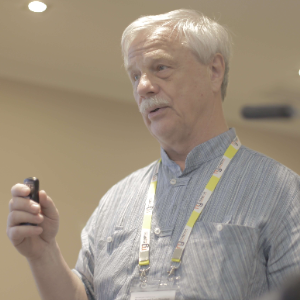Title : Local alpha block as a new tool in neuromagnetic studies
Abstract:
High spatial selectivity of multichannel SQUID-magnetometers (MEG) provides opportunity to distinguish contributions of different cortical electric sources into magnetic signals measured around the head. One can extract activity of a single source with specific behavior, when many other cortical areas are busy with their own tasks. MEG detects cortical sources much better than the scalp EEG. Standard procedure requires many repetitions of stimulus to average out spontaneous oscillations and to select the event related signal, which is usually small in comparison with the running brain activity. However, spontaneous activity, where alpha (10Hz) oscillations play the dominant role, is not irrelevant to the task performed by the subject under study. We see many magnetic signals of highest possible amplitude, which are clearly related to the task. Most obvious is the blocking of alpha oscillations for short periods of time during each cycle of repetitive selfpaced finger movements. It was seen only in few sensors out of 306 surrounding the head. We observed similar alpha block using visual stimulation with short trains of light flashes imitating alpha spindles. This local suppression of high amplitude alpha oscillations was robust during tens of seconds, though it became invisible during comparable time spans when alpha oscillations in the monitored area virtually disappeared. This pattern of permanent waxing and waning of spontaneous activity was common for all our subjects (about 20). We see that magnetic sensors can monitor task related activity of a certain neural population in a real time, detecting highly reproducible signals during considerable time span. The monitored population is not a single one related to the task, there are others, sometimes invisible for our sensors. We often see trains of waves in the alpha and beta ranges sharply (with millisecond precision) synchronized in several cortical sites. They switch on and off simultaneously, highly resembling alpha block. We believe that the phenomena we observe are manifestations of cortical computations supporting mental activity. MEG is a good tool to study in fine detail these cortical processes.
Audience take away:
- We want to make clear that the comfortable device (MEG) can accurately monitor on line changes in the internal state of the human brain during mental tasks.
- Data, recorded in long experimental sessions, should be processed separately for the periods of time, when brain signals manifest clearly different patterns of spontaneous cortical activity.
- A certain characteristic event in the brain can be most pronounced for some subjects and virtually absent for others. This can be used for the selection of subgroups in the group under study.
- We believe that the measurement techniques have come to the point when the study of statistical properties of the brain signals should be supplemented with the study of dynamic interactions between cortical areas during particular mental tasks on a single-trial basis.




